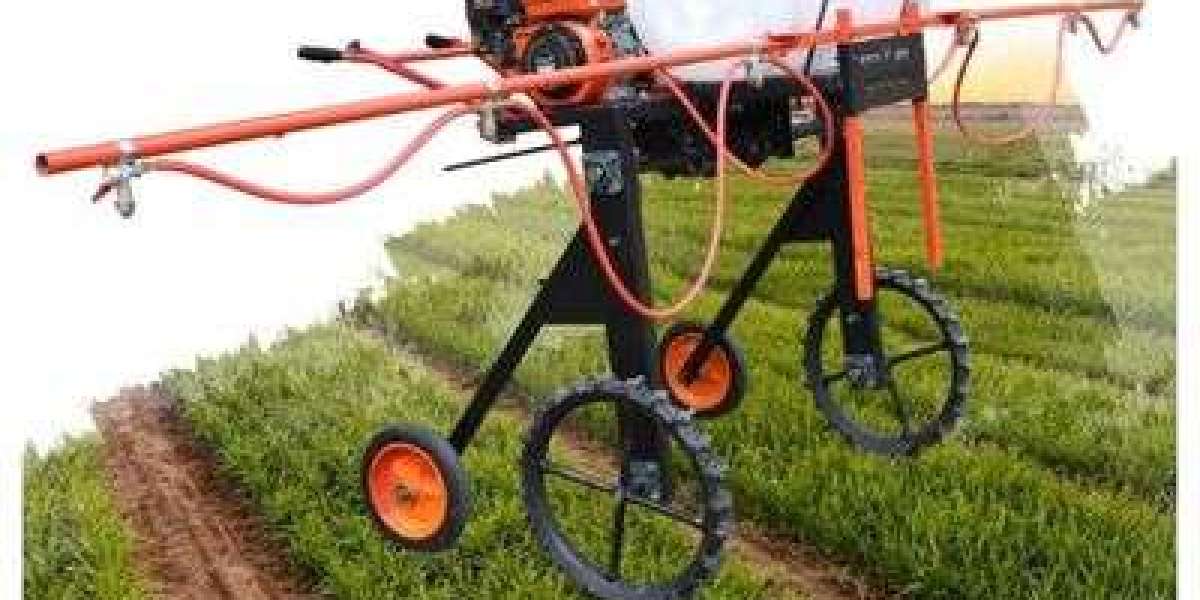What Is a Shotcrete Machine? A Complete Guide for Beginners
If you’ve ever wondered how concrete is sprayed so smoothly onto vertical or overhead surfaces like tunnel walls, swimming pools, or retaining structures, the answer is a shotcrete machine. This powerful piece of equipment has revolutionized the way concrete is applied, offering precision, speed, and durability that traditional methods struggle to match.
In this complete beginner's guide, we’ll explain what a shotcrete machine is, how it works, the different types, its core components, advantages, common applications, and what to consider when choosing one. Whether you're a student, contractor, or simply curious about modern construction methods, this guide breaks it all down in plain language.
What Is a Shotcrete Machine?
A shotcrete machine is a specialized device used to apply concrete or mortar through a hose and pneumatically projected at high velocity onto a surface. The term "shotcrete" is a combination of “shoot” and “concrete,” describing the unique way the concrete is delivered—by being “shot” out of the hose at high speed.
Shotcrete differs from conventional poured concrete in that it’s sprayed rather than poured into molds or forms. This makes it especially useful for complex shapes, vertical surfaces, and areas where traditional formwork is difficult or impossible to install.
How Does a Shotcrete Machine Work?
The basic operation of a shotcrete machine involves mixing and conveying the material to the nozzle using compressed air. From there, it is sprayed onto the desired surface. Depending on the type of shotcrete (dry-mix or wet-mix), the process will differ slightly.
Dry-Mix Shotcrete Process
In this method, dry cement and aggregates are mixed and placed into the hopper of the shotcrete machine. The dry material is conveyed through the hose using compressed air. Water is added at the nozzle just before the mixture is sprayed. The operator controls the water content, which is critical for achieving the right consistency.
Wet-Mix Shotcrete Process
With wet-mix shotcrete, all the ingredients (cement, aggregates, water, and sometimes additives) are pre-mixed before entering the shotcrete machine. The wet mixture is then pumped through the hose and sprayed onto the surface. This method offers more consistent quality and less rebound (material that bounces off the surface).
Types of Shotcrete Machines
Shotcrete machines come in a variety of forms, but they can generally be divided into two main categories based on the application method: dry-mix and wet-mix machines.
1. Dry-Mix Shotcrete Machine
These machines are typically simpler in design and more portable. They are ideal for smaller projects and are commonly used in mining, tunnel lining, and repair work. Dry-mix machines allow operators to adjust the water content in real-time, offering greater control but requiring more skill.
2. Wet-Mix Shotcrete Machine
Wet-mix machines are more complex and usually larger. They are commonly used in large-scale construction projects such as dams, swimming pools, and slope stabilization. These machines provide a more uniform mixture, higher efficiency, and better bonding strength.
Core Components of a Shotcrete Machine
Regardless of type, most shotcrete machines share the following essential components:
1. Hopper
This is where the shotcrete material is loaded—either dry mix or wet mix.
2. Feeding Mechanism
Feeds material from the hopper into the hose or pumping system.
3. Compressed Air System
Drives the material through the hose at high velocity. It's especially crucial in dry-mix systems.
4. Pumping System
In wet-mix machines, a pump moves the mixed material through the hose.
5. Nozzle
Where the water is added (in dry-mix systems) and the concrete is sprayed onto the surface. Operators have significant control over the spray pattern and flow here.
6. Control Panel
Allows the operator to adjust settings such as pressure, water flow (in dry-mix), and material feed.
Benefits of Using a Shotcrete Machine
✅ Fast Application
Shotcrete machines significantly speed up the application process compared to traditional concrete pouring.
✅ Versatility
Capable of spraying onto vertical, curved, or overhead surfaces without the need for formwork.
✅ Structural Strength
Shotcrete, when applied correctly, creates a dense and durable surface with excellent bonding properties.
✅ Cost-Efficiency
Reduced labor and formwork costs make it a more economical choice for many projects.
✅ Ideal for Complex Shapes
Its ability to conform to irregular shapes makes shotcrete ideal for tunnels, pools, and sculptures.
Common Applications of Shotcrete Machines
Shotcrete machines are used in a wide range of industries and environments. Some of the most common applications include:
?️ Tunneling and Mining
Used to stabilize tunnel walls and prevent rock falls. It provides quick reinforcement and support.
? Swimming Pools
The flexibility of the shotcrete application process allows for smooth, custom pool shapes and strong, water-tight finishes.
? Slope Stabilization
Shotcrete helps prevent soil erosion and landslides by reinforcing slopes, especially in hilly or mountainous areas.
?️ Concrete Repair
Shotcrete is widely used in the repair of bridges, dams, and other concrete structures due to its ability to bond to existing concrete.
?️ Architectural Projects
Useful for creating complex designs, textures, and finishes on architectural surfaces or sculptures.
Considerations When Choosing a Shotcrete Machine
If you’re in the market for a shotcrete machine, here are some factors to keep in mind:
1. Project Size and Type
Choose between dry-mix and wet-mix depending on your project’s needs. For larger, high-volume work, a wet-mix machine is usually better.
2. Material Compatibility
Make sure the machine is compatible with the type of material mix you plan to use (cement, aggregates, fibers, additives).
3. Mobility
Some machines are skid-mounted while others are trailer- or track-mounted. Choose based on how often you need to move it.
4. Output Capacity
Measured in cubic meters per hour, ensure the machine’s capacity matches your productivity goals.
5. Ease of Use and Maintenance
Machines with simple controls and accessible maintenance parts will reduce downtime and training requirements.
6. Safety Features
Modern shotcrete machines often come with built-in safety systems to protect operators from pressure surges or mechanical failures.
Operator Skill and Training
Using a shotcrete machine requires proper training and experience. In dry-mix systems especially, the operator must carefully control water content at the nozzle. Errors can lead to poor adhesion, rebound waste, or structural weakness.
Proper training includes:
Material handling
Equipment operation
Nozzle control
Safety protocols
Maintenance procedures
Certification programs and training workshops are available in many countries to ensure safety and consistency in shotcrete application.
Maintenance Tips for Shotcrete Machines
Regular maintenance ensures long-lasting performance and fewer breakdowns. Key maintenance tasks include:
Cleaning after each use to prevent buildup
Inspecting hoses and fittings for wear and tear
Checking air compressors for proper function
Lubricating moving parts
Monitoring electrical systems and replacing worn-out components
Final Thoughts
A shotcrete machine is more than just a tool—it's a game-changer in modern construction. From underground tunnels to luxury pools, its ability to spray concrete with precision and strength has opened up possibilities across industries. Understanding how these machines work, the types available, and the best practices for use can help you choose the right equipment and get the best results.
Whether you’re starting a construction business, managing a mining operation, or diving into a pool-building project, investing in the right shotcrete machine—and learning how to use it properly—can save time, money, and a lot of effort.














